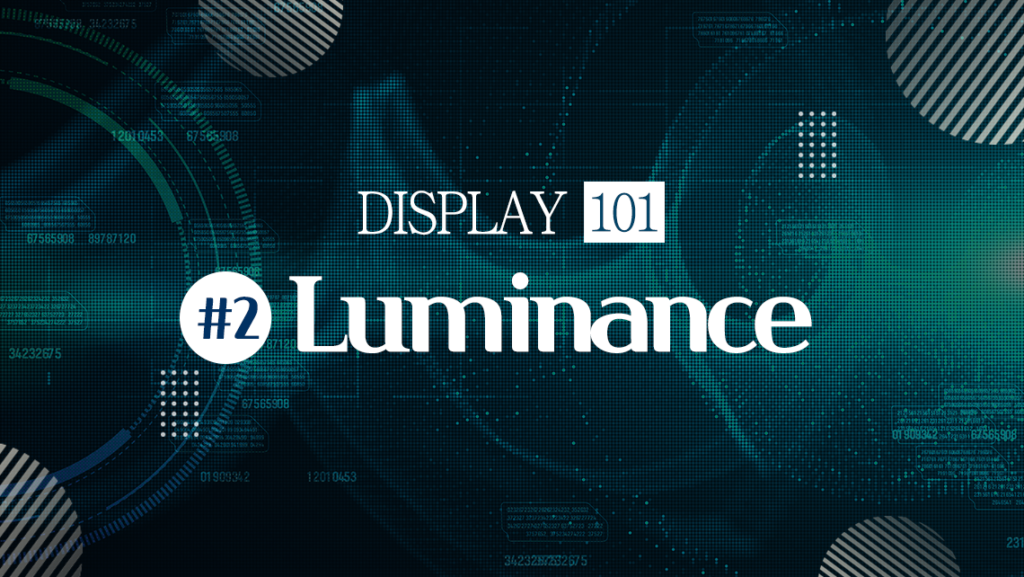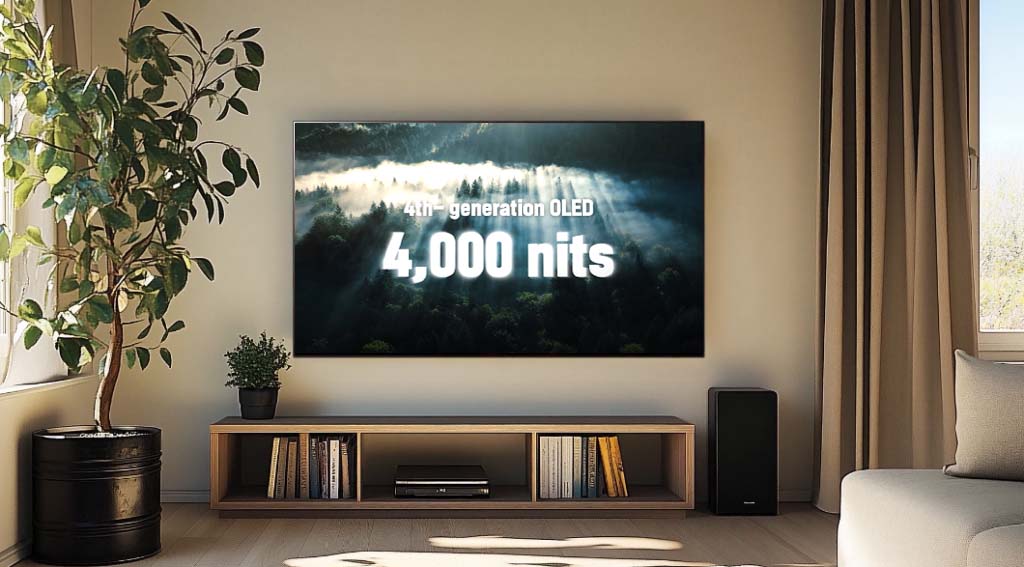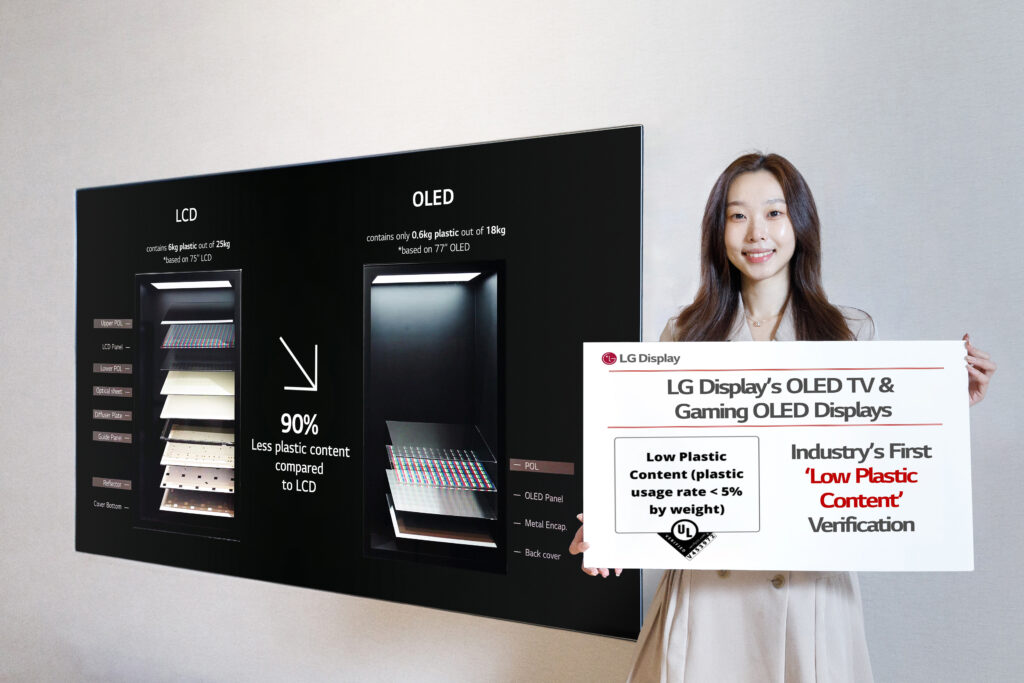DISPLAY 101
#2 Luminance

| Luminous intensity: The amount of light emitted by a light source in one direction over time Illuminance: The amount of light that reaches a surface area Luminance: The luminous intensity of a surface area |
When we talk about a display’s brightness, what we are referring to is luminance. Essentially, it is how much light comes from a surface and how strong it is. In addition to displays like TV screens, you can measure the luminance of other surfaces such as windows and mirrors. This is because light can be passing through a surface or bouncing off it as well as being produced.
It is also important to know that luminance is measured in candelas per square meter (cd/m2), which are also referred to as “nits.” The word “nit” is believed to come from the Latin nitere, which means “to shine.”
Luminance is often used by consumers to compare the relative brightness of displays.

A screen’s luminance should also be considered in contrast to its surroundings. If a screen is in a dark room, only a little luminance is needed for it to be seen clearly. If a screen is in a bright sunny day outside, it should produce a lot of luminance to contrast itself with its surroundings. Also, a screen with too much luminance compared to its surroundings can cause eye strain to anyone looking at it. So, it is important to consider luminance relative to its surroundings to create a good viewing experience.









